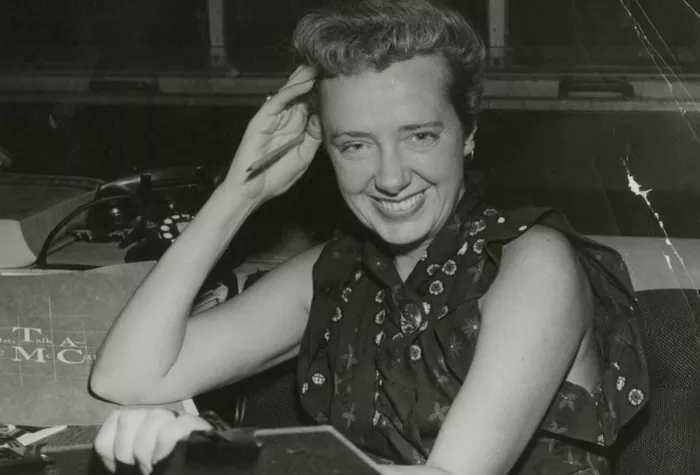Claire McCardell, a pioneering force in American fashion, is finally receiving long-overdue recognition thanks to a new biography by Elizabeth Evitts Dickinson. The book, titled Claire McCardell: The Designer Who Set Women Free, is set to release on June 17 and aims to shed light on a designer whose influence is deeply woven into everyday women’s wardrobes—despite her name being largely forgotten.
McCardell played a pivotal role in revolutionizing women’s fashion by introducing practical yet stylish elements such as pockets in dresses, ballet flats, wrap dresses, leggings, mix-and-match separates, and even denim. She also helped legitimize American sportswear as a fashion staple, moving away from the Parisian haute couture that dominated women’s clothing at the time.
According to author Elizabeth Evitts Dickinson, McCardell was the embodiment of the “American look.” She was the first woman with a Seventh Avenue manufacturer label and had full creative control over her designs. As Dickinson puts it, “Much of what hangs in our closet is Claire McCardell, but it’s Dior we remember.”
The author first encountered McCardell’s work in the late 1990s and was immediately struck by her contributions to modern fashion. “I had no idea that Claire McCardell was responsible, effectively, for most of the clothes in my closet,” she recalls. That discovery led her to publish a feature story in The Washington Post Magazine, which later evolved into a full-length biography. Dickinson says she was compelled by how groundbreaking McCardell was, especially considering the constraints of her time.
McCardell’s journey began in Frederick, Maryland, and she eventually attended Parsons, known then as the New York School of Fine and Applied Art. She launched her career in the 1930s—an era that Dickinson describes as a “forgotten moment” for women’s advancement, falling between World War I and World War II. During this period, McCardell joined a group of women who, according to Dickinson, “effectively invented the fashion industry.”
Though McCardell became a star in her own right, Dickinson emphasizes that her story is also one of female collaboration and collective progress. McCardell was far ahead of her time—not only in design but also in business strategy. She created her own brand, Claire McCardell Enterprises, and even trademarked her name, a move that safeguarded her creative rights and business interests.
In 2022, McCardell’s 1956 book What Shall I Wear?: The What, Where, When, and How Much of Fashion was re-released, featuring a foreword by designer Tory Burch. Burch’s Spring/Summer 2022 collection was inspired by McCardell’s work, and in the foreword, she wrote, “It isn’t an exaggeration to say she has inspired every designer, and I think she deserves far more recognition.”
Unlike designers like Dior, who focused on exclusive, handmade pieces, McCardell was committed to creating fashion for everyday women—those commuting on subways, working jobs, and living active lives. She designed practical yet elegant garments that were machine washable, unstructured, and flattering. Her goal was to make fashion wearable, accessible, and truly functional.
“She was dressing every woman,” Dickinson explains. McCardell rejected the fashion norms of the time, designing from the perspective of women who wore her clothes, not for the male gaze. She emphasized that style was personal and lasting, while fashion was fleeting. This mindset influenced generations of designers and reshaped the industry.
Notably, McCardell diversified her fashion line long before it became a norm. She designed everything from dresses and coats to sunglasses, scarves, and jewelry—effectively laying the groundwork for what is now known as the modern fashion brand. Her multifaceted approach and keen business acumen placed her on par with later icons like Calvin Klein, Ralph Lauren, and Tory Burch—long before their time.
McCardell’s legacy was cut short when she passed away from colon cancer at just 52 years old on March 22, 1958. Her sudden death left no succession plan for her business, leading to the eventual closure of the Claire McCardell label. Dickinson notes that had McCardell lived longer, her name might be as well-known today as the designers she influenced.
Through her designs and philosophies, McCardell fundamentally changed how women dressed and viewed fashion. She encouraged women to prioritize comfort and individuality over trends. As Betty Friedan once wrote, McCardell “changed the world’s meaning of fashion.”
Elizabeth Evitts Dickinson’s upcoming biography seeks to reintroduce Claire McCardell to the world and ensure that her monumental impact on fashion is no longer overlooked.
Related Topics

